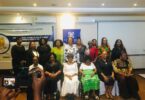Report by: News Desk
The commemoration of the Day of the African Child, with a themed focus on financing for development, reminded me of one thread of thought that we need to be having around development financing.
The way we talk about money for development is certainly changing, with a shift from “funding” to “financing, denoting less of a mere fancy word swap but more of a search for smarter, more sustainable ways of making resources available for development.
Here is the thing: on one hand, some of the innovative development financing models and ideas are coming from grassroots communities, right here in Africa and beyond.
Think about the local village banking models, what are called “Susu” in Ghana or “Chama” in Kenya or “Banki nkhonde” in Malawi, where communities take initiative to pool their resources to lend a helping hand for start-up business capital, pay for school fees for vulnerable students, provide shelter for survivors of Gender Based Violence and other emergencies.
All these demonstrate a shared ambition of acceptable and better standards of living amongst many.
On the other hand, we are seeing governments taking bold steps to fulfil their duty to provide for their citizens by putting in place measures that provide targeted investments in particular human development sectors.
For example, how some governments have adopted Gender Responsive Budgeting to respond to particular gendered needs of women and men, or allocation of specific budget lines within the national or subnational budgets on issues of particular interest such as family planning, or menstrual hygiene, as observed in countries such as Ghana, South Africa, Uganda and Rwanda.
All these initiatives attest to the fact that some level of domestic financing in human development is happening in one form or another.
But why are we not seeing sustained increases in investments in crucial sectors for human development?
Let us zoom out for a moment. Back in 2001, African leaders gathered in Abuja and made a bold commitment to dedicate at least 15% of their national budgets to health.
More than two decades later, most African countries are still falling short. In fact, only two out of 55 African Union member states, Cabo Verde and South Africa, managed to hit that 15% target in 2021.
The intention was to boost access to quality healthcare and tackle big health challenges, but the pace of progress has been slow. This is not to say African governments have been completely docile.
Over time, we have seen an increasing number of governments that have increased investments in important human development sectors such as health and education.
However, the majority of these cases should be understood with caution, as the bulk of these budgetary increments have been channelled towards servicing operational costs such as salaries and other Opex.
As a result, investments in human development often fall short, leaving classrooms, health services, and community programs under-resourced and unable to fully support Africa’s future generations.
Every time I think of human development, I try to put a human face to these realities, and these are some of the things I see:
A bus packed with 100,000 pregnant women – now imagine that out of every 100,000 journeys, 310 of those women never reach their destination.
In Ghana, that heartbreaking number translates to roughly 887 mothers lost every year due to preventable causes related to pregnancy and childbirth.
A classroom in Ghana where, on average, more than one in ten girls aged 15 to 19 has already started childbearing, and in places like the Savannah Region, it is as high as one in four.
Out of these, only a tiny fraction – just 3% in some cases – use modern contraceptives. Over the last five years, Ghana has seen more than half a million teenage pregnancies.
A pregnant woman hoping for a safe delivery but finding only one midwife available for every 1,000 expectant mothers.
This shortage means that skilled care during pregnancy and childbirth is often stretched too thin, especially in rural communities. Without enough midwives to provide timely support, complications can go unnoticed, putting mothers and unborn babies at risk.
Now these are not just statistics; they are the faces behind the human capital we need for development- mothers, sisters, daughters or friends.
And yet our capacity to meet these human development needs can no longer be fully realised by depending on external resources; governments must chip in more than ever to sustain the gains that have been made with foreign development assistance.
But how can we make our policymakers listen to us? How can we, as development practitioners, unlock domestic financing?
So here is what I think:
Systematic and Concerted Advocacy: We need to speak with one voice to convince governments. When we are all over the place with our advocacy, nothing changes. But when we unite and push together, governments listen, and change happens.
Effective Communication: We need to tell our stories better and with impact. Let us start painting vivid pictures of issues that matter. Every year we wait, more mothers die. Every Cedi, Kwacha, Naira or Shilling wasted is a future lost.
Making a Case for Cost of Inaction: The cost of inaction, that is, the price we will pay for no or inadequate investments in the right human development sectors, such as health, education, youth development etc., is too high.
For example, child marriage could drain the global economy by $4 trillion by 2030. Thus, investing in Cost of Inaction research or Investment cases is indeed the right way to produce effective communication products.
System Strengthening: Investing in systems strengthening now is the way to go – building sustainable, locally led solutions that would work even in the event of donor funding cuts.
This shift from aid dependence to self-sufficiency is essential for lasting developmental progress.
Discourage Pilferage: Pilferage of resources, for example, in health and social sectors, drains billions each year, diverting funds meant for critical services like family planning and maternal health.
Tackling pilferage is essential to ensure every dollar supports stronger, healthier communities across the continent. Let this be part of every discussion we have on domestic financing.
Let us make the case so clear, so human, that no policymaker can ignore it. The waves around the world are calling for change, not any other but the one that will last. Let us respond with action, passion, and hope.
Author: Emmily Sandra Naphambo, PhD. / naphambo@unfpa.org
Source: www.thenewindependentonline.com








